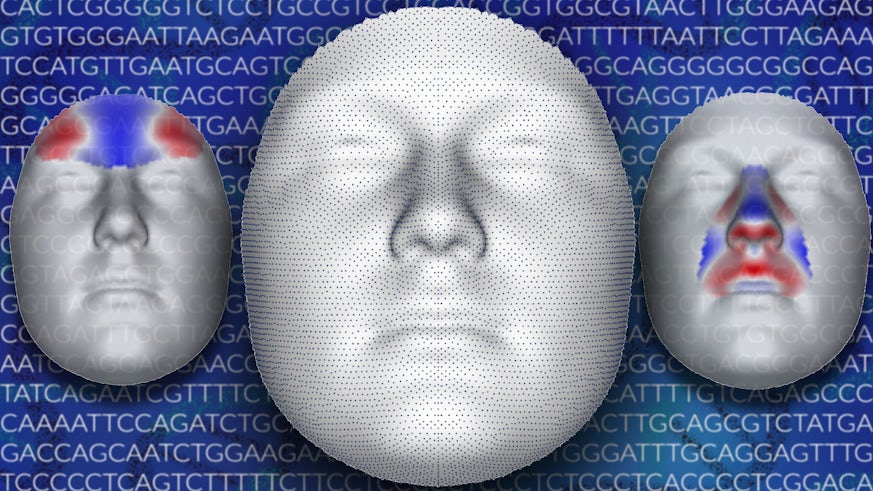Scientists reveal genetic map of the human face
7 December 2020

An international team of researchers has connected specific genetic regions which influence facial features.
This means they can see the signals of normal facial features in the genome – but it is also hoped their work can shed light on craniofacial malformations such as cleft lip and palate.
The findings are published today in an article in the journal Nature Genetics.
The study used two data sets - three-dimensional facial data collected from more than 3,566 15-year olds by Cardiff University’s Professor Stephen Richmond in collaboration with the University of Bristol as part of the Avon Longitudinal Study of Parents and Children (ALSPAC) birth cohort study, and 4,680 individuals from the US.
Using advanced genetic and computerised techniques, they were able to relate specific facial features to areas on the DNA and specific genes.
Professor Richmond, an author on the paper from Cardiff University’s School of Dentistry whose research focuses on explaining facial variation, said: “Essentially, the individual components of the face are defined by genes and genetic interactions and in this study 203 genetic regions have been identified that influence facial features.
“Some of the genes highlighted in this study have also been shown to be involved in other organ development. This is not surprising as craniofacial anomalies are usually associated with other medical conditions - and the findings of this study will provide further insight in the shared genetics in cranial-facial and whole-body development including some common medical conditions.
“Indeed, this fits in with other work we have done and are currently undertaking with face shape being associated with medical conditions such as asthma, sleep disorder breathing and high blood pressure.”
Professor Richmond said there had been “significant” advances in knowledge over the past eight years thanks to collaborations in data, techniques and expertise over 18 institutions in 4 countries.
“As a clinical orthodontist these are exciting findings that will improve our understanding of normal craniofacial development as well as why craniofacial anomalies develop such as cleft lip and palate,” he said.
“In addition, the validation of these gene-face shape associations will lead to improved understanding and of the origins of minor and major craniofacial anomalies leading to better diagnoses and targeted advanced treatments resulting in better treatment outcomes.”
Share this story
The School is the only dental school in Wales, providing unique and important leadership in dental research, teaching and patient care.


